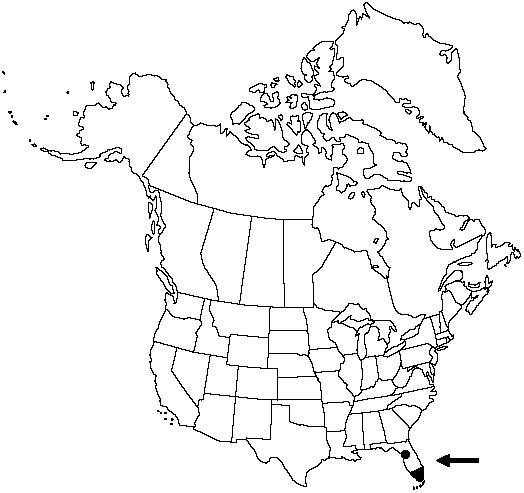Pityrogramma trifoliata
Contr. Gray Herb. 189: 68. 1962.
Leaves 50–150 cm, rarely longer. Petiole reddish brown, shiny, scaly. Blade linear-lanceolate, 1-pinnate apically to 2-pinnate proximally; fertile pinnae white-farinose abaxially. Pinnae palmate to pinnate, 2–3(–7)-foliolate proximally, with flat surfaces parallel to ground, undivided and linear apically. Pinnules short-stalked, linear, occasionally lobed proximally, margins serrulate. Spores with perispore sparsely granular, lacking equatorial flange. 2n = 116.
Habitat: Roadside ditches and canal banks
Elevation: 0–20 m
Distribution

Fla., Mexico, West Indies in Greater Antilles, Central America, South America.
Discussion
The range of Pityrogramma trifoliata is apparently actively expanding in Florida, perhaps in response to increasing disturbance of wetland habitats. A good case can be made for segregation of this species into the monotypic Trismeria Fée, based on differences in dissection of leaves and spore ornamentation noted in the descriptions of this and the previous species. Because naturally occurring hybrids with four other Pityrogramma taxa are known to exist in the tropics, P. trifoliata is retained in Pityrogramma for the present, following R. M. Tryon (1962), who viewed P. trifoliata as a specialized offshoot of the core group of species in the genus. Elsewhere, plants are known with yellow farina on the fertile leaves, but these are nowhere common.
Selected References
None.
